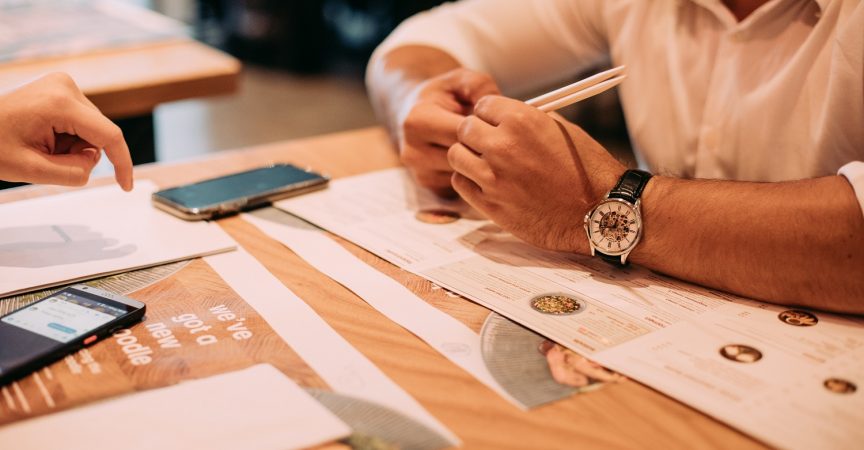Menu Engineering for Maximum Profitability
In the wake of COVID-19, restaurant operators are facing intense financial hardship. As a result, operators will need to find creative ways as they reopen and relaunch in order to boost profitability. President of The Fifteen Group, David Hopkins shares his expertise on how to set your restaurant up for success with proper menu engineering and by controlling food costs.
Menus are the number one consideration for driving profitability to your business so it’s paramount to understand the cost of what you’re selling. If operators commit to approaching menu engineering in the right way, Hopkins points out that they can add two – five per cent of sales to their bottom line.
Guest capacity restrictions along with seating in short supply will require restaurants to implement pricing increases to survive. Yet, it’s not enough to simply “stick” a new price on each menu item.
“Proper menu engineering techniques can help a restaurant creatively and effectively put more money to the bottom line with minimal negative impact to the guest,” said Hopkins.
Out with the Old, In with the New – Menu Pricing Models
Hopkins challenges the 30% menu pricing model commonly used by operators across the industry. Traditionally, operators aim for a 30 per cent food cost when pricing each menu item, but are unaware of how much each ingredient is truly costing them. For instance, their strategy may start with the cost of the protein, tripling this amount, adding a few extra dollars and naming that figure the sale price of the menu item.
Often used by owners and/or chefs for simplicity and convenience, the 30 per cent pricing strategy is ineffective at judging how successful your menu can be in producing a healthy bottom line.
During COVID-19 operators may face difficulties accessing ingredients, and as a result may increase food costs to compensate for these challenges. If you aim for 30 per cent or below food cost you may be compromising guest experience (the most important aspect of value proposition for your restaurant) by gouging your guests with expensive pricing. Prioritizing guest experience can lead to repeat business, drive word of mouth advertising, and increase your revenue.
According to Hopkins, ‘Margin Menu Pricing’ is the correct way to price a menu. This pricing strategy focuses on the margin cost of each dish instead of the food cost percent.
To illustrate how to use the margin menu pricing method to having a bottom line while keeping the guest experience intact:
If the price of a dish increases by $3.00 because of supply chain product cost challenges, 30% pricing strategy would suggest that you need to put the price of that dish up by $10.00 to maintain a 30% product cost. In reality, you only need to put the price up by $3.00 to equally offset the increased cost (and make the exact same profit margin as you did before).
Margin Menu Pricing – What’s it Worth to You?
Before maximizing profits, you must properly cost your menu and recipes to understand what the current profitability of each item is. Below are steps for Margin Menu Pricing by building a QuaM graph (Quantity Margin Graph):
- Create your graph and label each axis accordingly. The bottom axis is labelled as the profit margin, while the left axis is labelled as quantity sold.
- Choose different categories to organize your menu into like-items with a graph for each category (appetizers, mains,, etc.)
- Plot different menu items in each quadrant based on their performance and profitability such as Puzzlers, Stars, Opportunities, and Dogs.
- Puzzlers – menu items with above average profitability but not as popular as others
Your approach: don’t take them off the menu, but determine ways to sell more of them.
- Stars – popular menu items that are highly profitable.
Your approach: leave these top performers alone.
- Opportunities – highly popular items, but not making you the money they should on your menu.
Your approach: consider if they’re underpriced to begin with and increase prices appropriately.
- Dogs – below average profit margin, below average quantity.
Your approach: take these items off the menu temporarily to recreate the dish. Create a version that is at the very least not losing you money and charge appropriately.
Evaluate where you placed each menu item on the graph and decide what your approach will be to drive profitability.
By reducing prices of certain menu items and selling more of that item to your guests, you can generate more profit. This happens by stealing away profit from less profitable items on your menu.
“Approaching your menu for this perspective, will allow you to keep making great profit but will also allow your menu price point to be as value driven as possible for the guest,” explains Hopkins.
Costing out a menu can be time consuming for your chef. Yet, the Canadian government Wage Subsidy that provides financial relief during COVID-19, can subsidize the time your chef spends costing the menu. This gives you the best opportunity to reopen for success.
Menus matter and time is of the essence. Take advantage now to engineer a winning menu for your restaurant and guests in preparation for reopening. Relaunch your restaurant with a menu that maximizes profitability. Get in touch with David Hopkins and The Fifteen Group, to help properly engineer your menu.










Innovative and creative Menus at a reasonable profit margin is certainly a must. In order to survive, you most definitely need the necessary amount of clientele to meet the business volume for existence. With customer restrictions in the food service industry, it creates quite a challenge to meet the goals. Hotels/Restaurant Chains as well as Institutional Food Services should have a better chance of survival. In this changing and difficult times, Government support is a must.